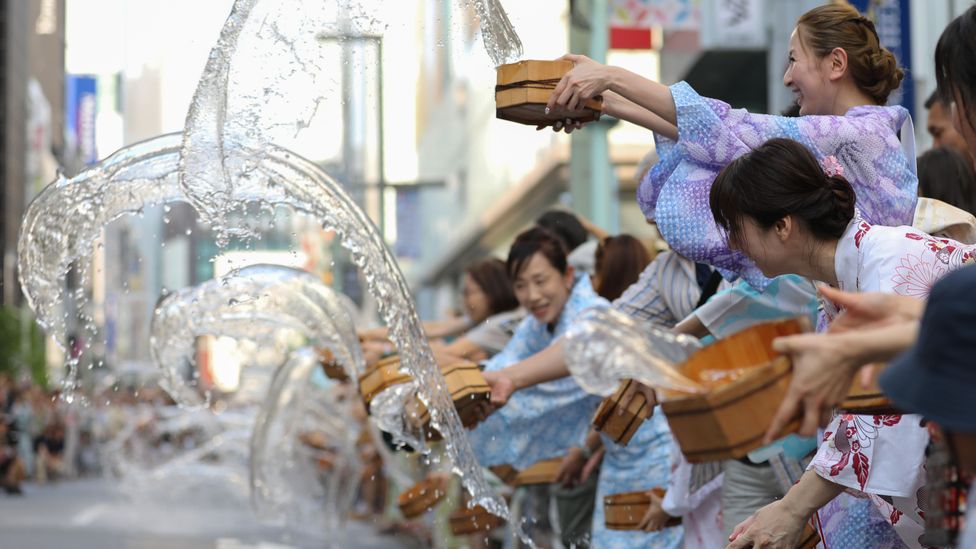When our iPhones alerted us that the temperature had crept past 37C, we paused. Every sun-drenched step outside felt like we were wagyu steaks sizzling on the grill. Was honeymooning in Japan in July – one of its hottest, most humid months – really a good idea?
From Osaka to Kobe to Kyoto, my wife Erin and I planned every day with one goal: avoid melting into puddles. Around us, hordes of tourists were in the same sweaty boat. But a few days in, I noticed something. The locals looked noticeably cooler, less crabby, more comfortable. Why?
The answer should come as no surprise. Japan, a nation renowned for its design thinking and innovation, is armed with a fistful of ways to survive punishing heat. While they love air-con as much as the next heat-stricken country, they also find respite in creative remedies, from electrically ventilated clothes to water-based rituals.
Solutions like these epitomise a nation where ancient traditions fuse with hyper-modern cities reaching endlessly towards the future. Here's six ways that locals cope with extreme heat.
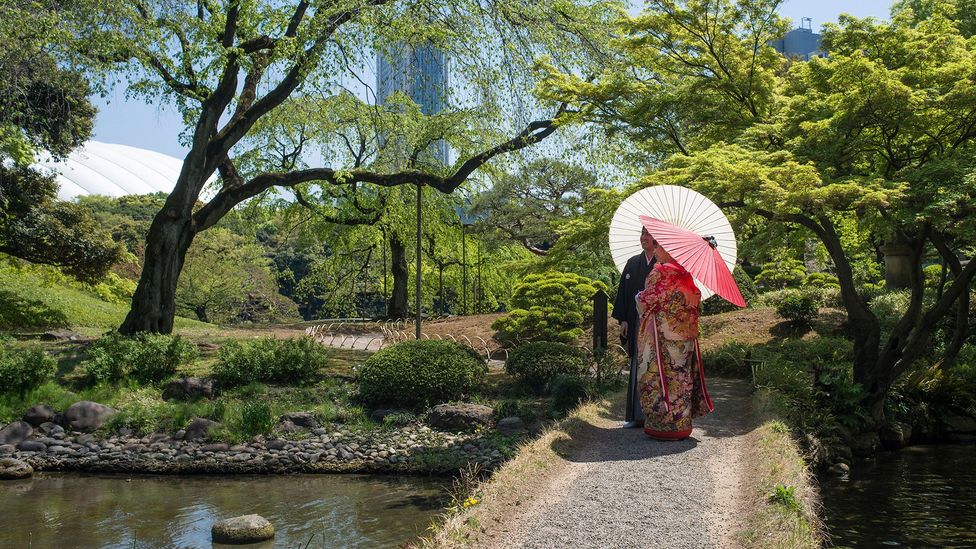
The Japanese concept mono no aware reminds us that all things are beautiful, fleeting and temporary – even sweltering heat (Credit: Andia/Alamy)
Zen spaces, Zen mindset
You could see it in every tourist's eyes as they fanned their sweaty faces: I want out of the sun, now. In times like this, a Japanese concept is a useful balm. Mono no aware can perhaps best be summed up in the phrase "this too shall pass", the notion that all things are beautiful, fleeting and temporary – even sweltering heat. In an interview with the South China Morning Post, Tokyo-based journalist Richard Lloyd Parry, who wrote a book about the 2011 Japanese tsunami, theorised that exposure to extreme weather has moulded Japan's national character. Earthquakes, punishing seasons, typhoons – "all this has bred a deep strain of fatalism or acceptance [in the Japanese psyche]".
If achieving the ever-accepting state of mono no aware seems unachievable in high temperatures, be like a local and head to a real Zen space. In Kyoto, the Heian Jingu Shrine garden is a literal breath of fresh air. Shaded by maple and cherry trees and ribboned by a cool pond, the park feels like a door to a calmer dimension. Its centrepiece is the aptly named Bridge of Peace, whose dark, creaking eaves are filled with hundreds of furin glass chimes. Often dotted around temples as a symbol of protection against evil, the ringing notes of furin act as a gentle reminder of cool winds. Surrounded by these chimes, with fat koi swimming lazily in the water below, I can attest that their sound felt like respite.
Fashion: Ultra-baggy and fan-powered
Whether in baking street markets or Shinto shrines, tourists cope by shedding layers. Singlets, crop tops and shorts became our way of recognising fellow visitors. Conversely, many locals were swathed in cloth. Yuri Cath, who was raised in Yokohama, explained that apart from allowing air to circulate around your limbs freely, loose clothes are a nod to the country's conservative fashion mores. "It's still frowned upon to wear revealing clothing in Japan," Cath said, "so people get creative with cooler layering, while still looking stylish."
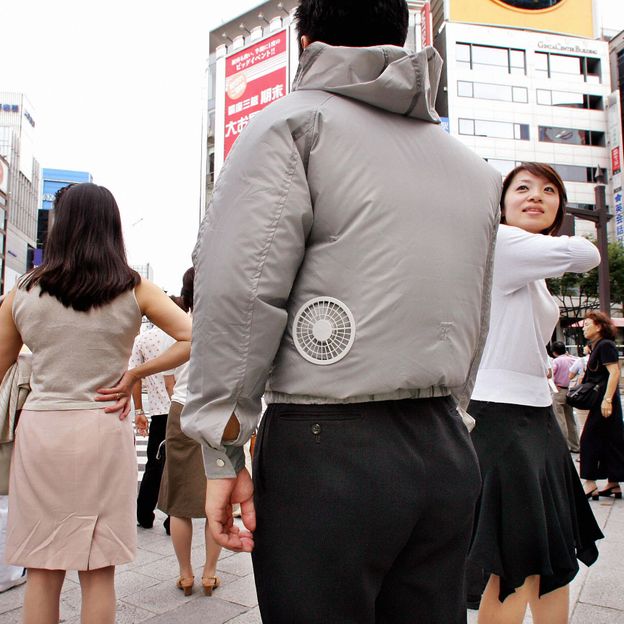
Look out for jackets fitted with battery-powered fans (Credit: Yoshikazu Tsuno/ Getty Images)
It's also worth picking up a few clothes from Uniqlo, a fashion brand beloved in Japan and abroad. They have an innovative line called AIRism, made from thin fabric that wicks sweat and dries quickly. I bought no fewer than four AIRism boxers on the honeymoon, and count those thin, silky purchases as my best souvenirs.
Three Japanese products to help you stay chilled
Cooling sunscreen
Walk down Japan's pharmacy aisles and you'll be met with an Aladdin's Cave of sprays, foams and sticks that keep you cool and UV-ray safe. Look out for the Cool UV Spray from a brand called Ishizawa.
Iced neck rings
Hugely popular in Japan, you just stick one in the fridge before you go and it keeps you cool on the move. Take your pick from brands, which offer rings that are cheap, stylish and everything in between.
Shaved ice machines
Cheap, cooling, adaptable for any flavour – shaved ice desserts (think mounds of pebble-sized ice drizzled in fruit or sauce) are popular in Japan and much of southeast Asia. Many households still use the old mechanical ice-shaver; travellers can spring for snazzier handheld models that are perfect for picnics.
Meanwhile, I enviously eyed Japanese men who strolled past in tobi trousers (think MC Hammer's parachute pants, but even baggier). Tobiwere originally worn by construction workers who favoured them as the billowing fabric kept you cool.
Want something more high-tech? On sun-baked intersections, we saw crossing guards clad in what looked like bulky jackets and winced in sympathy. Turns out we were misguided: those jackets come with powerful built-in fans that, when the jacket is zipped, create a kind of closed-loop system of coolness.
Salty solutions
You can't walk a block in Japan without stumbling over a vending machine, and while bottles of water are welcome, one drink truly hits the spot. Pocari Sweat may not have the most attractive English name, but its mix of electrolytes, originally inspired by the makeup of an IV solution, is (according to their website at least) designed to rehydrate you faster. All I can say is the cool, tangy liquid felt like a lifesaver at high noon.
More than one Japanese friend credits Pocari's popularity to their advertising prowess. When temperatures rise, the brand kicks into high gear. In 2014, they even placed heat-sensitive branded stickers at bus stops that turned red when the thermometer passed 30C.
If there's no nearby vending machine, duck into to a ubiquitous convenience store. As you savour the air-con, pick up a bag of salt plum candies – a treat to suck on while replenishing your sodium levels.
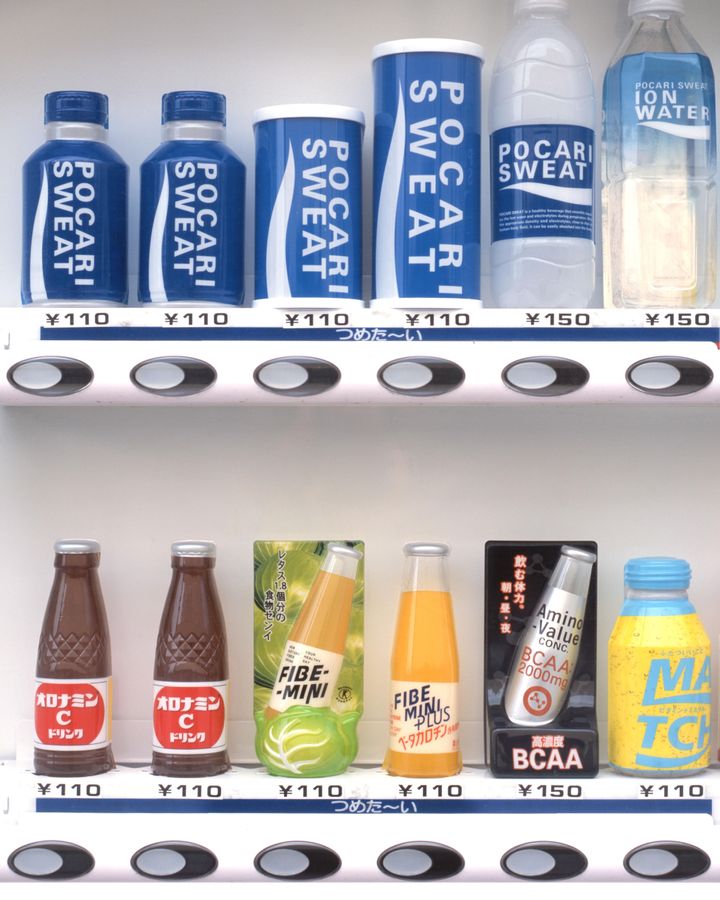
The sports drink Pocari Sweat is hugely popular in Japan and across Asia (Credit: Chris Willson/Alamy)
Speak the language of summer
Not surprisingly, Japan has built an entire vocabulary around heat. There is a practicality to this shared language. If someone tells you tomorrow's weather will be kokusho (intense heat around 35C), then you'll dress accordingly. If they say it will be hot but bearable, thanks to a kunpuu (summer breeze), better still. Or if you suffer from natsubate, summer exhaustion, and want to hunker on your couch chugging Pocari Sweat, there's a name for that activity too: shokibarai (roughly: "cheering the mind and body to dispel the heat").
Speaking of shokibarai, Cath says that in the summer, many TV channels here show endless reruns of horror films. There is a belief, she explained, in the literal "chilling" power of movies that send shivers down your spine. "I love it," sighed Cath, "though I always regret watching them afterwards."
It's no coincidence ghost stories fill screens each summer: Obon, an ancient festival honouring deceased loved ones, is held in August. During this time, it's thought that the dead temporarily walk the Earth once more.
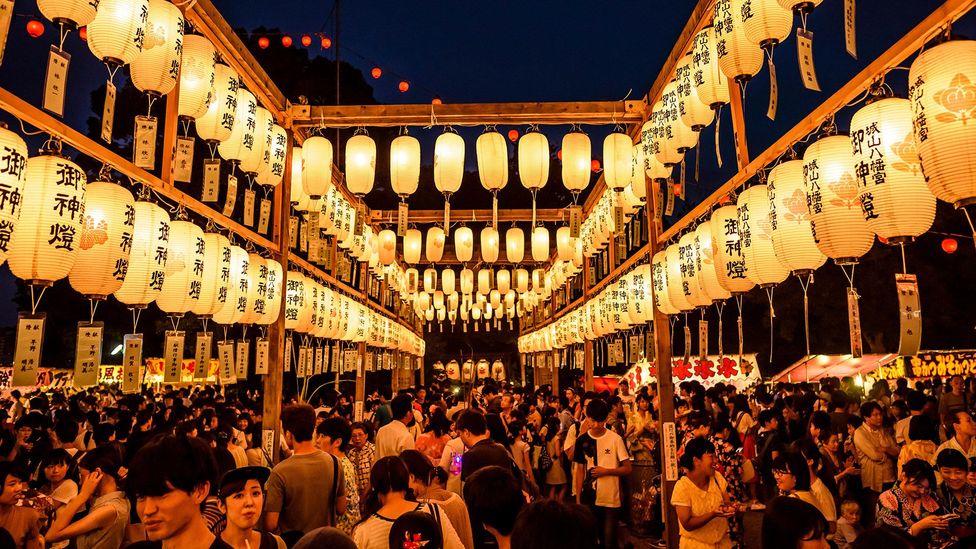
The festival of Obon, which honours the souls of one's ancestors, is held each year during summer (Credit Cavan Images/Alamy)
Stay in sync
Apparently, when my wife and I were devouring platefuls of katsu curry, we were being smart. Like many cultures across Asia, the Japanese believe spicy foods can pep up your tired system after a warm day, or even make you sweat, thereby cooling you. There may also be something in the philosophy of eating, and living, in sync with the weather around you. As Cath noted, "You might notice that air-con in public spaces is set to ensure it's not too cold."
True enough, more than one train we saw had a sign saying "mildly air-conditioned" on the side. That's not just a great energy-saving measure, says Cath: it helps keep you regulated with the ambient heat.
Pouring heat away
We noticed several shopkeepers carefully throwing buckets of water on the street outside their establishment. Only later did I realise that in warm weather, this act goes beyond the Japanese passion for cleanliness. It's an ancient practice known as uchimizu, said to cool the ambient air temperature and tamp down dust by splashing water with your hand or tossing it from a bucket onto the ground. For decades, the Japanese Water Federation has run campaigns encouraging people to get sprinkling (ideally with collected rainwater rather than wasteful tap water).
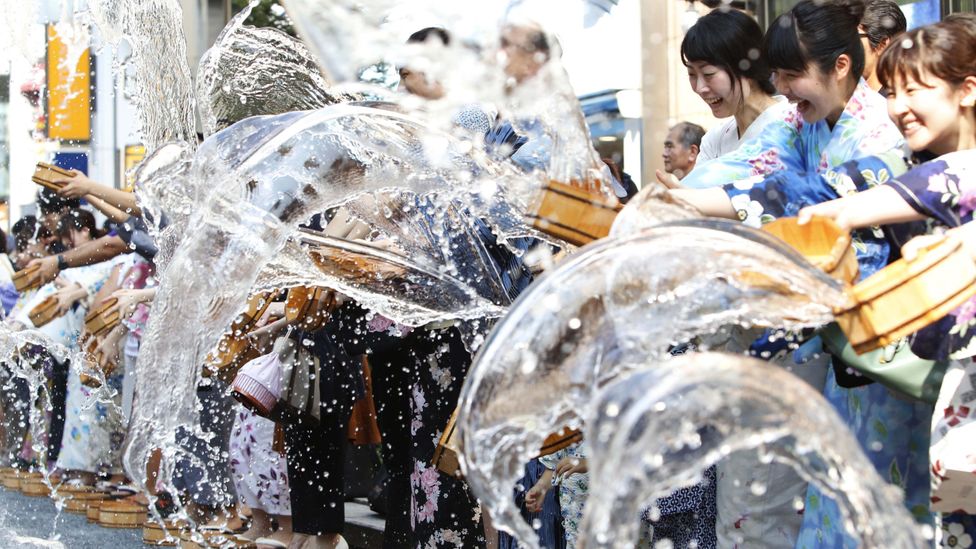
The Japanese summer tradition of splashing water cools down the air as the water evaporates (Credit: Xinhua/Alamy)
While there have been few scientific studies into uchimizu, one experiment by a team at Delft University of Technology in the Netherlands concluded that "this simple method of sprinkling water has the potential to considerably reduce extreme heat in paved urban areas". They added that the practice "presents an opportunity to increase the awareness of city dwellers and to encourage them to […] save energy." Many of the bucket-throwers we passed were old. Time will tell whether the practice will be passed on from the elder generation or die out.
My wife and I finished our honeymoon in love with Japan, and drained by 10 days of battling the elements. On the blessedly air-conditioned plane ride home, I wondered if my future travels would be viewed through the same lens: learning from the ancient and new ways that locals cope with a warming planet.
---
Join more than three million BBC Travel fans by liking us on Facebook, or follow us on Twitter and Instagram.
If you liked this story, sign up for the weekly bbc.com features newsletter called "The Essential List". A handpicked selection of stories from BBC Future, Culture, Worklife and Travel, delivered to your inbox every Friday.
